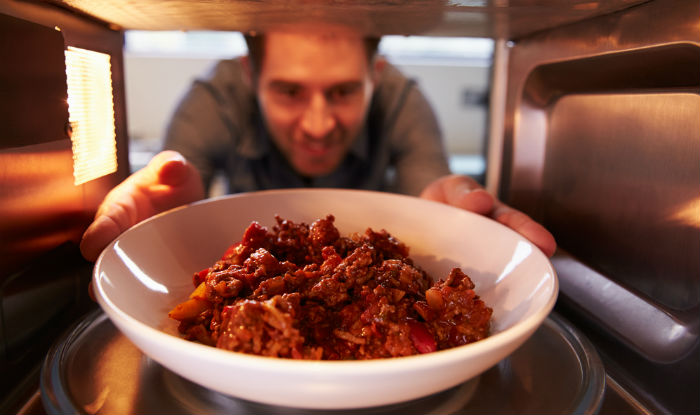Are you tired of throwing away uneaten leftovers and wasting perfectly good food? Look no further! We have the ultimate solution to make the most out of your meals – the art of food reheating. Whether you have a busy schedule or want to save some money, knowing how to properly reheat your leftovers can be a game-changer in the kitchen.
In this article, we will explore the world of food reheating, providing you with practical tips, delicious recipes, and essential guidelines. We understand the importance of maintaining the taste, texture, and nutritional value of your food, so we’ll dive into the science behind reheating techniques.
To ensure you achieve the best results, we will introduce you to a company that specializes in offering guidance on reheating refrigerated or frozen food. With their expertise, you’ll learn how to reheat meals without compromising on flavor or safety. So, let’s get started on this journey to revitalize your leftovers and master the art of food reheating!
Importance of Proper Food Reheating
Reheating food is a common practice for many households, but the importance of properly reheating food often goes overlooked. By understanding the significance of this process, you can not only ensure the safety of your meals but also enhance their flavors and nutritional value.
When food is stored in the refrigerator or freezer, it can lose its original texture and taste. Properly reheating it can bring back the flavors and make it enjoyable once again. By following the right techniques, you can avoid ending up with a dull or mushy plate of leftovers.
Additionally, reheating food to the correct temperature is crucial for food safety. Bacteria can multiply rapidly in food that is left at improper temperatures, leading to foodborne illnesses. This is especially true for cooked meats, poultry, and seafood. By reheating these types of foods correctly, you can eliminate any harmful bacteria that may have developed during storage.
Proper food reheating also holds the key to preserving the nutritional value of your meals. Many nutrients are sensitive to heat, and overcooking or microwaving food can result in nutrient loss. By reheating your food correctly, you can retain more of the essential vitamins, minerals, and antioxidants that are present in your leftovers.
Remember, reheated food can be just as enjoyable and nutritious as freshly cooked meals when done properly. Become familiar with the guidelines for reheating different types of food, and take the necessary steps to ensure that your reheating process is safe, effective, and beneficial for your well-being.
Best Practices for Reheating Refrigerated Meals
-
Check for Freshness:
Before reheating any refrigerated meal, it is crucial to ensure its freshness. Look for any signs of spoilage or foul odors. Discard any leftovers that appear questionable in any way, as consuming spoiled food can lead to foodborne illnesses. -
Proper Storage:
To maintain the quality of leftovers, proper storage is essential. Store refrigerated meals in airtight containers or sealable bags to prevent moisture loss and the absorption of odors from other items in the fridge. Label containers with the date to track their freshness and consume them within a few days. -
Reheat Gradually:
To retain moisture and avoid overcooking, it is best to reheat refrigerated meals gradually. Start by using a lower heat setting or shorter duration and adjust as needed. This approach ensures that the food is warmed evenly and minimizes the risk of drying it out.
Remember, following these best practices will help you to enjoy delicious and safely reheated meals while minimizing food waste.
Tips for Safely Reheating Frozen Foods
-
Gradual Thawing: When reheating frozen foods, it is crucial to thaw them properly to ensure even heating and minimize the risk of bacterial growth. The best way to thaw frozen food is to transfer it from the freezer to the refrigerator and allow it to thaw overnight. This gradual thawing method preserves the texture and flavor of the food while preventing any harmful bacteria from multiplying.
-
Use a Food Thermometer: To ensure the safety of reheated frozen foods, it is essential to check their internal temperatures using a food thermometer. Different foods have different safe internal temperatures, so it’s important to know the specific recommended temperature for the type of food you are reheating. Insert the thermometer into the thickest part of the food and make sure it reaches the appropriate temperature to ensure it is fully cooked and safe to eat.
-
Reheat Thoroughly: When reheating frozen foods, it’s important to heat them thoroughly to eliminate any potential pathogens. Ensure that the food is piping hot all the way through. This can be achieved by using methods such as stovetop heating, microwave reheating, or oven baking, depending on the type of food. Stirring or rotating the food during the reheating process can help ensure even heating and prevent any cold spots.
Remember, proper reheating of frozen foods not only ensures their safety but also helps maintain their taste and texture. By following these tips, you can enjoy your leftovers without compromising on quality or risking any potential health hazards.
